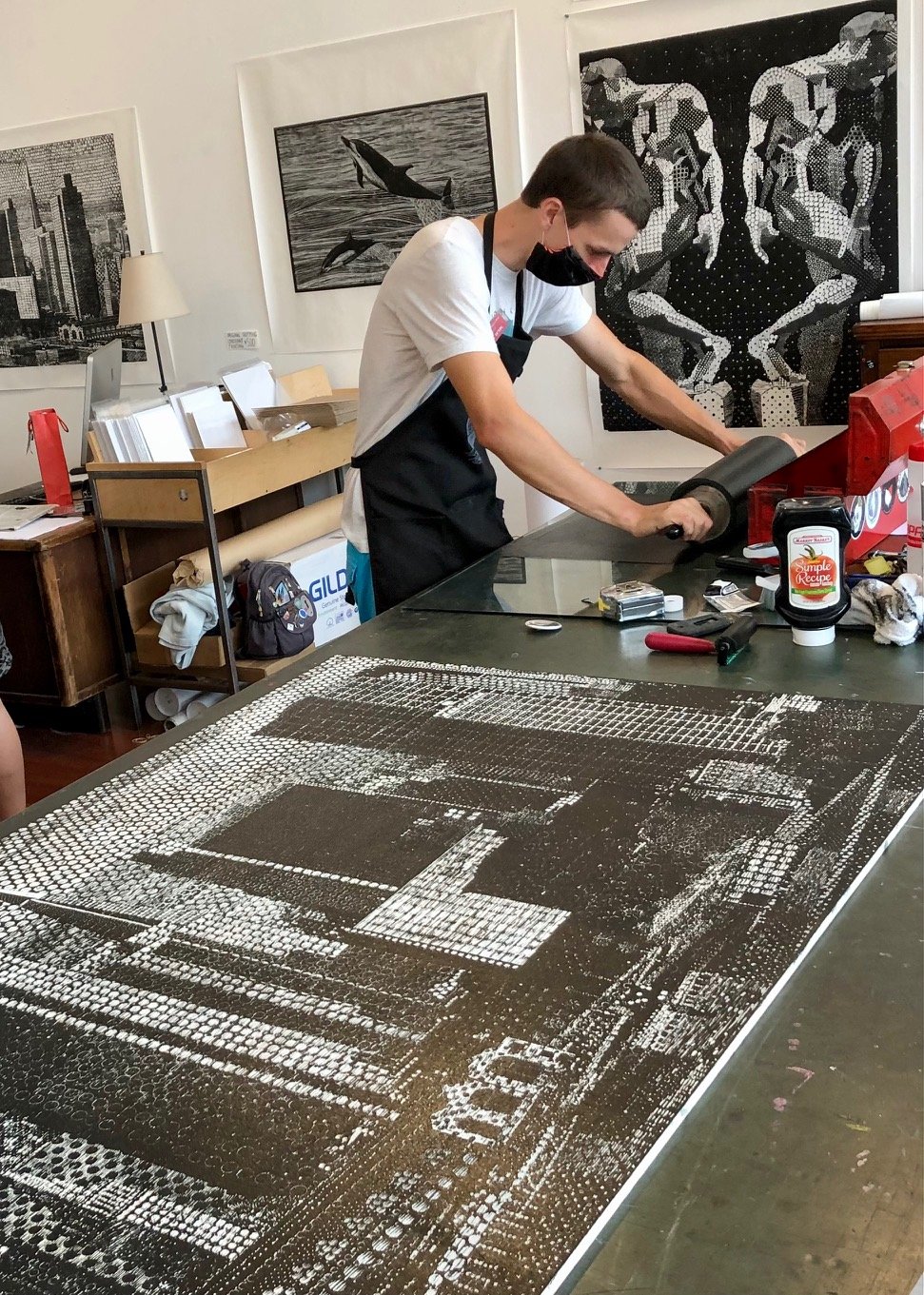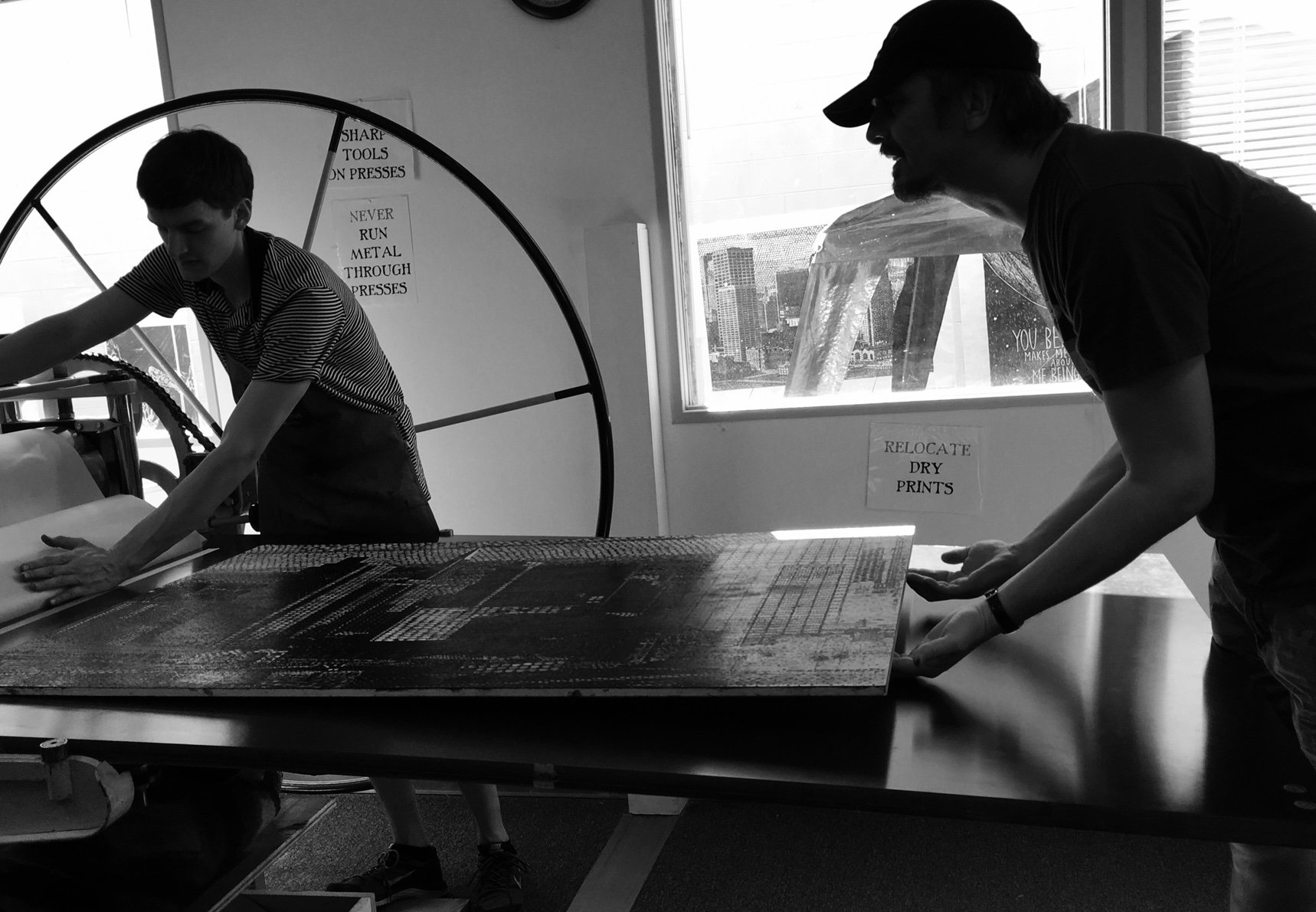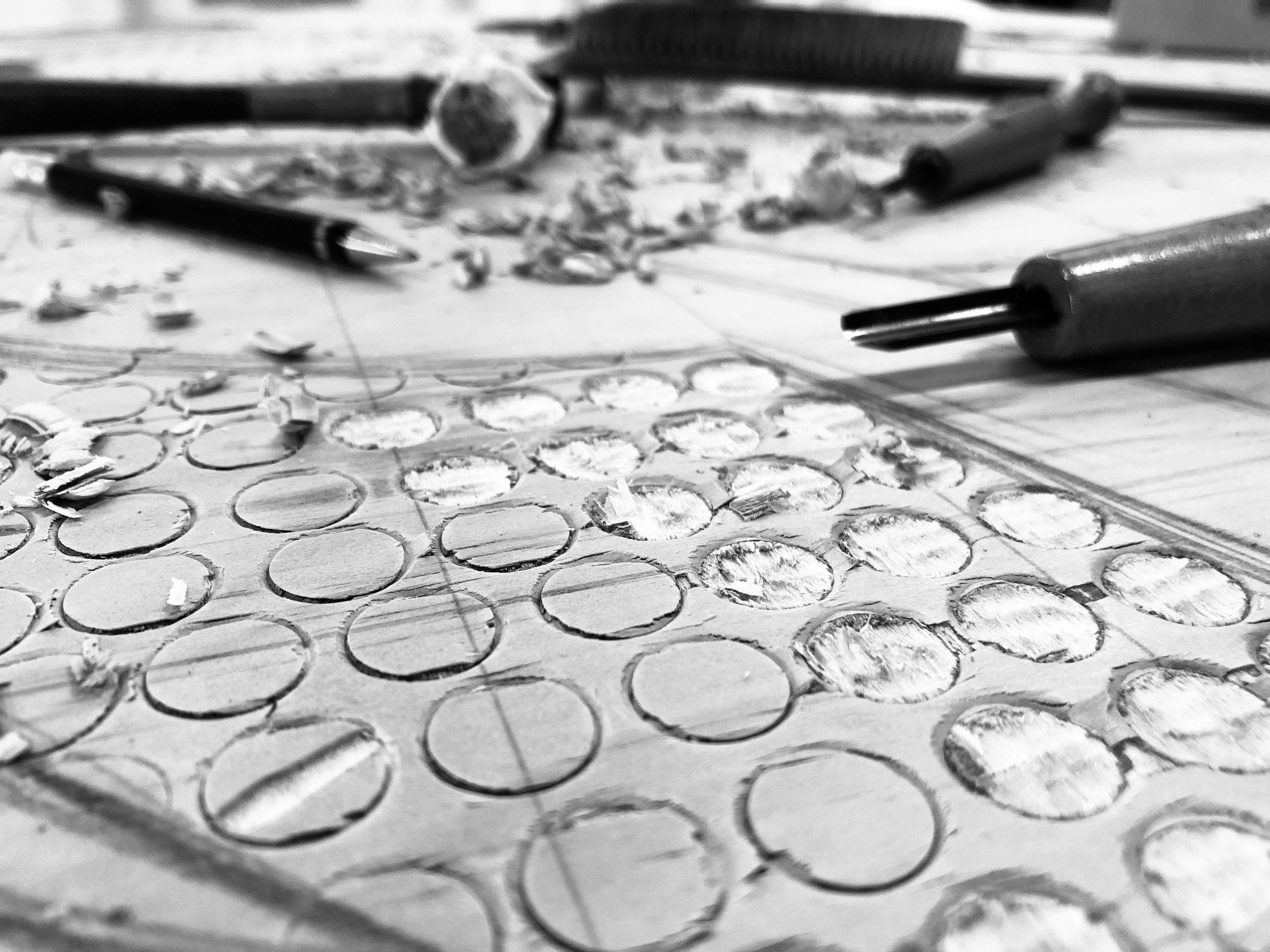Gary in his studio carving woodblock for Back to Back
Gary Comoglio majored in painting at the San Francisco Art Institute (SFAI). It was during college that he was first introduced to etching, screen printing, and lithography and became interested in the medium of printmaking. Later he began to explore relief printmaking techniques, i.e., woodblock and linocut printmaking, and became enamored with it due to its sculptural quality and portability, and because it does not require hazardous substances or expensive equipment.
As an active artist in the East Bay Arts Community for over 30 years, Gary has exhibited his artwork in group art shows, juried exhibitions, and open studios; produced art exhibitions and events; mentored MFA students; taught printmaking workshops; and served on the board of two prestigious arts organizations: the Achenbach Graphics Arts Council, whose home is located at the Legion of Honor in San Francisco, and the California Society of Printmakers (CSP). Gary served as CSP’s Exhibitions Director where he produced over 15 exhibitions, showcasing prints and artworks on paper, at public art venues and community arts organizations in the Bay Area. He founded and operated his own art gallery, Gary Francis Fine Art in Alameda, which featured the artwork of mid-career and emerging artists in the San Francisco Bay Area. The Alameda County Arts Commission presented Gary with the Alameda County Arts Leadership Award, which recognizes individuals for their outstanding achievements and contributions impacting the arts community.
Artist’s Statement
From a young age, art has been my vocabulary and language. Art is a way to understand and express my emotional states and internal landscapes, to explore my experiences and discover that which seems unique is in essence universal, and therefore common to us all. The desire to explore, express, and reflect has driven me to become an artist, and still drives me today.
My art works are visual portrayals: of the relationships between objects — how we relate and respond to one another and to our environment; of aspects of human experience — such as mood and emotional states; and of the distortions in our perception. We take in and understand the world through our senses, primarily vision. Our perception is not necessarily reality. Our brain fills in a lot of details to make sense of and create links between objects. But there is no true objectivity about what we see or perceive. Two people do not objectively see or perceive the same image or color - it is all an approximation and associations our brains have learned to make. Incorporating surrealistic distortions of perspective and scale, I complicate what it means to view and understand an image and the relationships between objects and space. The resulting artwork is seemingly a cryptographic message for the viewer to interpret, using the art as a space for subjective projection.
My art seeks to interpret and reinterpret objects and spatial relationships between objects through color, shapes, scale, space, depth of field, perspective, etc. to reveal how context shifts meaning. My art embraces the beauty of simplicity, light and color, and abstracted shapes to create strong compositions, often built on a foundation of collaged elements, such as drawings, photographs, and found images. I explore ways to morph representational aspects of figures and objects with abstract elements to allow for more expressive use of paint that remains in proximity to the subject while simultaneously obscuring it.
“[A] painting is an attitude. It’s like a sign that is hung up to be seen. It says this is the way it is according to a given sensibility.”
My artistic style and aesthetic influences include Ukiyo-e Japanese woodblock printing, Pop Art, and Bay Area Figurative style as well as elements of Surrealism, Abstract Art and Minimalism. I favor the manner of traditional Japanese woodblock artists, such as Hiroshige, focusing on technique to bring much of the same simple beauty, emphasis on strong composition, and flatness in my woodblock prints. My approach to painting is inspired by California artists, such as Richard Diebenkorn, Nathan Oliveira, Wayne Thiebaud, William T. Wiley, and Enrique Chagoya. I enjoy using richly pigmented, thick paint and vigorous brushstrokes to develop, define and redefine the image building on successive layers of paint coaxing the my internal vision to emerge on the canvas.




